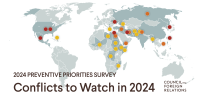As 2024 unfolds, the political landscape is intricately intertwined with ongoing conflicts and warfare around the globe. The resurgence of geopolitical tensions, coupled with new and escalating conflicts, has significant implications for international relations, security policies, and humanitarian efforts. This article examines some of the key wars and conflicts occurring in 2024, their causes, and the broader political ramifications.
1. The Ukraine Conflict: A Prolonged Standoff
The war in Ukraine, which began in 2022, continues to dominate the political discourse in 2024. Key developments include:
- Stalemate and Negotiations: Despite international support for Ukraine, the conflict has reached a stalemate, with both sides entrenched in their positions. Efforts for peace negotiations have been intermittent, often derailed by territorial disputes and mutual distrust.
- Western Support: The U.S. and NATO allies have maintained military and economic support for Ukraine, complicating relations with Russia and affecting global energy markets.
Implications: The prolonged conflict poses challenges for European security and has fueled debates on military readiness and energy independence across the continent.
2. Escalation in the South China Sea
The South China Sea remains a flashpoint for geopolitical tensions in 2024, with increased military activities from various nations:
- Territorial Disputes: China continues to assert its claims over disputed islands, leading to confrontations with regional neighbors like the Philippines and Vietnam. U.S. naval operations in the area have further heightened tensions.
- Military Buildup: Countries in the region are ramping up their military capabilities, with increased defense spending and partnerships to counterbalance China's influence.
Implications: The escalation in the South China Sea could lead to military confrontations and disrupt international shipping routes, impacting global trade.
3. Conflict in the Middle East: The Israel-Palestine Situation
The Israel-Palestine conflict has witnessed renewed violence in 2024, impacting regional stability:
- Escalating Violence: Clashes between Israeli forces and Palestinian groups have intensified, fueled by political instability and socio-economic grievances. Incidents of rocket fire and retaliatory airstrikes have become more frequent.
- International Responses: The international community has struggled to mediate the conflict, with various countries taking sides, complicating peace efforts.
Implications: The violence exacerbates humanitarian crises and could destabilize neighboring countries, leading to broader regional conflicts.
4. Emerging Conflicts in Africa
Africa has seen a rise in localized conflicts that pose significant challenges to governance and security in 2024:
- Sahel Region Instability: The Sahel continues to grapple with insurgency and terrorism, with groups affiliated with Al-Qaeda and ISIS exploiting political vacuums and ethnic tensions.
- Ethiopian Tensions: The conflict in Ethiopia, particularly in the Tigray region, remains unresolved, with ongoing humanitarian issues and regional implications as neighboring countries grapple with refugee crises.
Implications: The increasing instability in Africa calls for urgent international attention and support to prevent spillover effects and to foster sustainable peace.
5. Cyber Warfare and Hybrid Conflicts
In 2024, the landscape of warfare is not limited to traditional military confrontations; cyber warfare has become a critical component of modern conflicts:
- State-Sponsored Cyber Attacks: Nations are increasingly using cyber capabilities as a means of warfare, targeting critical infrastructure, government institutions, and private enterprises.
- Hybrid Warfare Tactics: Conflicts are evolving into hybrid warfare scenarios, where conventional military strategies are combined with cyber operations, disinformation campaigns, and economic pressure.
Implications: The rise of cyber warfare necessitates new strategies for national defense and international cooperation, as traditional military responses may not be sufficient in addressing these threats.
Conclusion
The interplay of politics and warfare in 2024 is complex and multifaceted, with various conflicts impacting global stability and security. From the ongoing struggles in Ukraine and the South China Sea to the heightened tensions in the Middle East and Africa, the challenges are formidable. As nations navigate these turbulent waters, understanding the underlying causes and potential consequences of these conflicts will be crucial for policymakers, diplomats, and international organizations working toward peace and security in an increasingly interconnected world. The landscape of warfare is evolving, demanding innovative responses to both conventional and unconventional threats.







